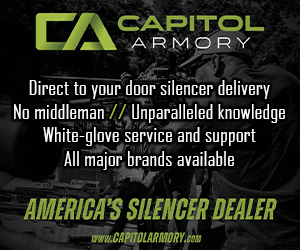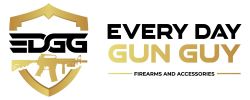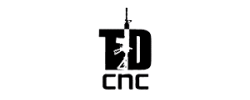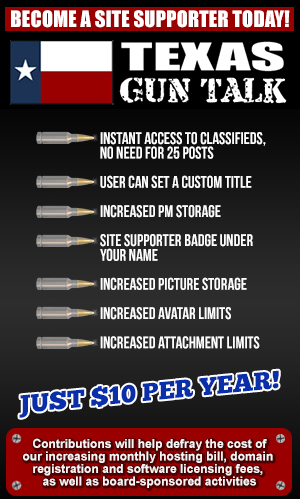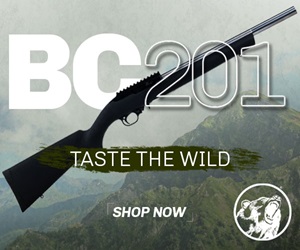You are using an out of date browser. It may not display this or other websites correctly.
You should upgrade or use an alternative browser.
You should upgrade or use an alternative browser.
What to look for when buying a used revolver?
- Thread starter Texas42
- Start date
The #1 community for Gun Owners in Texas
Member Benefits:
Fewer Ads! Discuss all aspects of firearm ownership Discuss anti-gun legislation Buy, sell, and trade in the classified section Chat with Local gun shops, ranges, trainers & other businesses Discover free outdoor shooting areas View up to date on firearm-related events Share photos & video with other members ...and so much more!
Member Benefits:
dee
Well-Known
On smith's look for play in the cylinder.
txinvestigator
TGT Addict
ALL with a double checked unloaded gun;
Make sure the cylinder locks up properly, meaning when the hammer is ready to fall be sure that the cylinder is locked up, or does not move.
Look for a bent ejection rod.
Be sure the action is smooth, but not too light.
cock the hammer and hold it with the barrel pointing straight up. Place a pencil, eraser side first, into the barrel. Press the trigger and the pencil should jump.
Repeat, only this time tap the trigger with a knife handle or other solid object. If the safety mechanism is working properly and you do not hold the trigger back, the pencil should not jump.
The other issue is cylinder alignment, and I believe a gunsmith needs to check that. That insures that the cylinder holes and barrel are lined up correctly when the hammer falls; otherwise the gun will shave lead and spit it out on those around you.
I was injured at CHL instructor school by the guy next to me when his S&W was shaving lead.
Make sure the cylinder locks up properly, meaning when the hammer is ready to fall be sure that the cylinder is locked up, or does not move.
Look for a bent ejection rod.
Be sure the action is smooth, but not too light.
cock the hammer and hold it with the barrel pointing straight up. Place a pencil, eraser side first, into the barrel. Press the trigger and the pencil should jump.
Repeat, only this time tap the trigger with a knife handle or other solid object. If the safety mechanism is working properly and you do not hold the trigger back, the pencil should not jump.
The other issue is cylinder alignment, and I believe a gunsmith needs to check that. That insures that the cylinder holes and barrel are lined up correctly when the hammer falls; otherwise the gun will shave lead and spit it out on those around you.
I was injured at CHL instructor school by the guy next to me when his S&W was shaving lead.
okie556
Well-Known
TI....Will this safety test work on all revolvers?
Repeat, only this time tap the trigger with a knife handle or other solid object. If the safety mechanism is working properly and you do not hold the trigger back, the pencil should not jump.
Repeat, only this time tap the trigger with a knife handle or other solid object. If the safety mechanism is working properly and you do not hold the trigger back, the pencil should not jump.
txinvestigator
TGT Addict
TI....Will this safety test work on all revolvers?
Repeat, only this time tap the trigger with a knife handle or other solid object. If the safety mechanism is working properly and you do not hold the trigger back, the pencil should not jump.
S&W I know, and Colt I think. Should work on Taurus too.
You are looking at the topstrap of a revolver, the top of the gun over the cylinder, where it meets the barrel. Most revolvers experience flame cutting if the cylinder has excessive fore/aft gap where it meets the barrel, some even with the gap in spec if shot with hot loads such as magnums.
Ignore the cracked forcing cone but this pic should illustrate it better.

Ignore the cracked forcing cone but this pic should illustrate it better.

wendyZXZ
Member
If you are looking at a Colt cock the hammer, pull the trigger when lowering the hammer. Holding the trigger back try to move the cylinder. If it moves any then it is going out of time or is out of timing. A Colt that has the trigger pulled on the hammer like that will have absolutely zero movement in the cylinder.
Make sure to check the topstrap for flame cutting especially on magnum guns.
I had never heard of checking for that. Thanks for the info.
MadMo44Mag
TGT Addict
** edit - I don't remember where I got this but it is some good info**
How do check one over without firing it, right at the dealer's counter or gun show table?
This is how. All of this works with DA or SA wheelguns..."close the action" on most DAs means swing the cylinder in, on SA types, close the loading gate, on breakopens, close 'em. UNLOADED.
WARNING: most of these tests require violation of the "finger off trigger" rule. Therefore, be extremely careful about safe muzzle direction and making sure the gun is unloaded ahead of time, PERSONALLY, as you begin handling it.
Note: bring a small flashlight, something small and concentrated. A Photon or similar high-powered LED light is perfect. You also want feeler gauges if you're not used to eyeballing cylinder gaps; at a minimum, bring a .002", .004" and .006".
Note2: no dry firing is required or desired at any point. It just pisses off the gun's current owner.
Cylinder play.
1) With the gun UNLOADED (check for yourself!), close the action.
2) Thumb the hammer back, and while pulling the trigger, gently lower the hammer all the way down while keeping the trigger back - and KEEP holding the trigger once the hammer is down. (You've now put the gun in "full lockup" - keep it there for this and most other tests.)
3) With the trigger still back all the way, check for cylinder wiggle. Front/back is particularly undesirable; a bit of side to side is OK but it's a bad thing if you can wiggle it one way, let go, and then spin it the other way a fraction of an inch and it stays there too. At the very least, it should "want" to stop in just one place (later, we'll see if that place is any good). The ultimate is a "welded to the frame" feeling.
Cylinder gap
4) Still holding the trigger at full lockup, look sideways through the barrel/cylinder gap. If you can get a credit card in there, that ain't good...velocity drops rapidly as the gap increases. Too tight isn't good either, because burnt powder crud will "fill the gap" and start making the cylinder spin funky. My personal .38snubbie is set at .002, usually considered the minimum...after about 40 shots at the range, I have to give the front of the cylinder a quick wipe so it spins free again. I consider that a reasonable tradeoff for the increased velocity because in a real fight, I ain't gonna crank 40 rounds out of a 5-shot snub
 .
.
If you're eyeballing it, you'll have to hold it up sideways against an overhead light source.
SAFETY WARNING: This step in particular is where you MUST watch your muzzle direction. Look, part of what's happening here is that you're convincing the seller you know your poop
 . It helps the haggling process. If you do anything unsafe, that impression comes completely unglued.
. It helps the haggling process. If you do anything unsafe, that impression comes completely unglued.
Timing
5) You really, REALLY want an unloaded gun for this one. This is where the light comes in. With the gun STILL held in full lockup, trigger back after lowering the hammer by thumb, you want to shine a light right into the area at the rear of the cylinder near the firing pin. You then look down the barrel
 . You're looking to make sure the cylinder bore lines up with the barrel. Check every cylinder - that means putting the gun in full lockup for each cylinder before lighting it up.
. You're looking to make sure the cylinder bore lines up with the barrel. Check every cylinder - that means putting the gun in full lockup for each cylinder before lighting it up.
You're looking for the cylinder and barrel holes to line up perfectly, it's easy to eyeball if there's even a faint light source at the very rear of both bores. And with no rounds present, it's generally easy to get some light in past where the rims would be.
Bore
(We're finally done with that "full lockup" crap, so rest your trigger finger.
 )
)
6) Swing the cylinder open, or with most SAs pull the cylinder. Use the small flashlight to scope the bore out. This part's easy - you want to avoid pitting, worn-out rifling, bulges of any sort. You want more light on the subject than just what creeps in from the rear of the cylinder on the timing check.
You also want to check each cylinder bore, in this case with the light coming in from the FRONT of each hole, you looking in from the back where the primers would be. You're looking for wear at the "restrictions" at the front of each cylinder bore. That's the "forcing cone" area and it can wear rapidly with some Magnum loads. (Special thanks to Salvo below for this bit!)
Trigger
7) To test a trigger without dry-firing it, use a plastic pen in front of the hammer to "catch" it with the off hand, especially if it's a "firing pin on the hammer" type. Or see if the seller has any snap-caps, that's the best solution. Flat-faced hammers as found in transfer-bar guns (Ruger, etc) can be caught with the off-hand without too much pain
 .
.
SA triggers (or of course a DA with the hammer cocked) should feel "like a glass rod breaking". A tiny amount of take-up slack is tolerable, and is common on anything with a transfer bar or hammerblock safety.
DA triggers are subjective. Some people like a dead-smooth feel from beginning of stroke to the end, with no "warning" that it's about to fire. Others (myself included) actually prefer a slight "hitch" right at the end, so we know when it's about to go. With that sort of trigger, you can actually "hold it" right at the "about to fire" point and do a short light stroke from there that rivals an SA shot for accuracy. Takes a lot of practice though. Either way, you don't want "grinding" through the length of the stroke, and the final stack-up at the end (if any) shouldn't be overly pronounced.
Detecting Bad Gunsmithing:
8) OK, so it's got a rock-solid cylinder, a .002" or .003" gap, and the trigger feels great. Odds are vastly in favor of it being tuned after leaving the factory.
So was the gunsmith any good?
First, cock it, then grab the hammer and "wiggle it around" a bit. Not too hard, don't bang on it, but give it a bit of up/down, left/right and circular action with finger off trigger and WATCH your muzzle direction.
You don't want that hammer slipping off an overly polished sear. You REALLY don't want that
 . It can be fixed by installing factory parts but that'll take modest money (more for installation than hardware costs) and it'll be bigtime unsafe until you do.
. It can be fixed by installing factory parts but that'll take modest money (more for installation than hardware costs) and it'll be bigtime unsafe until you do.
The other thing that commonly goes wrong is somebody will trim the spring, especially coil springs. You can spot that if you pull the grip panels, see if the spring was trimmed with wire cutters. If they get too wild with it, you'll get ignition failures on harder primers. But the good news is, replacement factory or Wolf springs are cheap both to buy and have installed.
There's also the legal problems Ayoob frequently describes regarding light triggers. If that's a concern, you can either swap back to stock springs, or since you bought it used there's no way to prove you knew it was modified at all
 .
.
In perspective:
Timing (test #5) is very critical...if that's off, the gun may not even be safe to test-fire. And naturally, a crappy barrel means a relatively pricey fix.
Cylinder gap is particularly critical on short-barreled and/or marginal caliber guns. If you need every possible ounce of energy, a tight gap helps. Some factory gaps will run as high as .006"; Taurus considers .007" "still in spec" (sigh). You'll be hard-pressed to find any new pieces under .004" - probably because the makers realize some people don't clean 'em often (or very well) and might complain about the cylinder binding up if they sell 'em at .002".
The guns in a dealer's "used pile" are often of unknown origin, from estate sales or whatever. Dealers don't have time to check every piece, and often don't know their history. These tests, especially cyliner gap and play, can spot a gun that's been sent off for professional tuning...like my snubbie, the best $180 I ever spent
 .
.
As long as the gun is otherwise sound (no cracks, etc) a gunsmith can fix any of this. So these tests can help you pick a particularly good new specimen, or find a good used gun, or help haggle the price down on something that'll need a bit of work.
Hope this helps.
How do check one over without firing it, right at the dealer's counter or gun show table?
This is how. All of this works with DA or SA wheelguns..."close the action" on most DAs means swing the cylinder in, on SA types, close the loading gate, on breakopens, close 'em. UNLOADED.
WARNING: most of these tests require violation of the "finger off trigger" rule. Therefore, be extremely careful about safe muzzle direction and making sure the gun is unloaded ahead of time, PERSONALLY, as you begin handling it.
Note: bring a small flashlight, something small and concentrated. A Photon or similar high-powered LED light is perfect. You also want feeler gauges if you're not used to eyeballing cylinder gaps; at a minimum, bring a .002", .004" and .006".
Note2: no dry firing is required or desired at any point. It just pisses off the gun's current owner.
Cylinder play.
1) With the gun UNLOADED (check for yourself!), close the action.
2) Thumb the hammer back, and while pulling the trigger, gently lower the hammer all the way down while keeping the trigger back - and KEEP holding the trigger once the hammer is down. (You've now put the gun in "full lockup" - keep it there for this and most other tests.)
3) With the trigger still back all the way, check for cylinder wiggle. Front/back is particularly undesirable; a bit of side to side is OK but it's a bad thing if you can wiggle it one way, let go, and then spin it the other way a fraction of an inch and it stays there too. At the very least, it should "want" to stop in just one place (later, we'll see if that place is any good). The ultimate is a "welded to the frame" feeling.
Cylinder gap
4) Still holding the trigger at full lockup, look sideways through the barrel/cylinder gap. If you can get a credit card in there, that ain't good...velocity drops rapidly as the gap increases. Too tight isn't good either, because burnt powder crud will "fill the gap" and start making the cylinder spin funky. My personal .38snubbie is set at .002, usually considered the minimum...after about 40 shots at the range, I have to give the front of the cylinder a quick wipe so it spins free again. I consider that a reasonable tradeoff for the increased velocity because in a real fight, I ain't gonna crank 40 rounds out of a 5-shot snub
If you're eyeballing it, you'll have to hold it up sideways against an overhead light source.
SAFETY WARNING: This step in particular is where you MUST watch your muzzle direction. Look, part of what's happening here is that you're convincing the seller you know your poop
Timing
5) You really, REALLY want an unloaded gun for this one. This is where the light comes in. With the gun STILL held in full lockup, trigger back after lowering the hammer by thumb, you want to shine a light right into the area at the rear of the cylinder near the firing pin. You then look down the barrel
You're looking for the cylinder and barrel holes to line up perfectly, it's easy to eyeball if there's even a faint light source at the very rear of both bores. And with no rounds present, it's generally easy to get some light in past where the rims would be.
Bore
(We're finally done with that "full lockup" crap, so rest your trigger finger.
6) Swing the cylinder open, or with most SAs pull the cylinder. Use the small flashlight to scope the bore out. This part's easy - you want to avoid pitting, worn-out rifling, bulges of any sort. You want more light on the subject than just what creeps in from the rear of the cylinder on the timing check.
You also want to check each cylinder bore, in this case with the light coming in from the FRONT of each hole, you looking in from the back where the primers would be. You're looking for wear at the "restrictions" at the front of each cylinder bore. That's the "forcing cone" area and it can wear rapidly with some Magnum loads. (Special thanks to Salvo below for this bit!)
Trigger
7) To test a trigger without dry-firing it, use a plastic pen in front of the hammer to "catch" it with the off hand, especially if it's a "firing pin on the hammer" type. Or see if the seller has any snap-caps, that's the best solution. Flat-faced hammers as found in transfer-bar guns (Ruger, etc) can be caught with the off-hand without too much pain
SA triggers (or of course a DA with the hammer cocked) should feel "like a glass rod breaking". A tiny amount of take-up slack is tolerable, and is common on anything with a transfer bar or hammerblock safety.
DA triggers are subjective. Some people like a dead-smooth feel from beginning of stroke to the end, with no "warning" that it's about to fire. Others (myself included) actually prefer a slight "hitch" right at the end, so we know when it's about to go. With that sort of trigger, you can actually "hold it" right at the "about to fire" point and do a short light stroke from there that rivals an SA shot for accuracy. Takes a lot of practice though. Either way, you don't want "grinding" through the length of the stroke, and the final stack-up at the end (if any) shouldn't be overly pronounced.
Detecting Bad Gunsmithing:
8) OK, so it's got a rock-solid cylinder, a .002" or .003" gap, and the trigger feels great. Odds are vastly in favor of it being tuned after leaving the factory.
So was the gunsmith any good?
First, cock it, then grab the hammer and "wiggle it around" a bit. Not too hard, don't bang on it, but give it a bit of up/down, left/right and circular action with finger off trigger and WATCH your muzzle direction.
You don't want that hammer slipping off an overly polished sear. You REALLY don't want that
The other thing that commonly goes wrong is somebody will trim the spring, especially coil springs. You can spot that if you pull the grip panels, see if the spring was trimmed with wire cutters. If they get too wild with it, you'll get ignition failures on harder primers. But the good news is, replacement factory or Wolf springs are cheap both to buy and have installed.
There's also the legal problems Ayoob frequently describes regarding light triggers. If that's a concern, you can either swap back to stock springs, or since you bought it used there's no way to prove you knew it was modified at all
In perspective:
Timing (test #5) is very critical...if that's off, the gun may not even be safe to test-fire. And naturally, a crappy barrel means a relatively pricey fix.
Cylinder gap is particularly critical on short-barreled and/or marginal caliber guns. If you need every possible ounce of energy, a tight gap helps. Some factory gaps will run as high as .006"; Taurus considers .007" "still in spec" (sigh). You'll be hard-pressed to find any new pieces under .004" - probably because the makers realize some people don't clean 'em often (or very well) and might complain about the cylinder binding up if they sell 'em at .002".
The guns in a dealer's "used pile" are often of unknown origin, from estate sales or whatever. Dealers don't have time to check every piece, and often don't know their history. These tests, especially cyliner gap and play, can spot a gun that's been sent off for professional tuning...like my snubbie, the best $180 I ever spent
As long as the gun is otherwise sound (no cracks, etc) a gunsmith can fix any of this. So these tests can help you pick a particularly good new specimen, or find a good used gun, or help haggle the price down on something that'll need a bit of work.
Hope this helps.
DCortez
TGT Addict
Sounds like a great youtube movie.
MadMo44Mag
TGT Addict
Would you care to be the Executive producer?Sounds like a great youtube movie.
Maybe get DirtyD to be camera and sound man?
Ask Alan if he would play the part?
Oh sorry those would be your decision as the Executive producer.
I just want screen credit for the "Liberated" information.
DCortez
TGT Addict
Would you care to be the Executive producer?
Maybe get DirtyD to be camera and sound man?
Ask Alan if he would play the part?
Oh sorry those would be your decision as the Executive producer.
I just want screen credit for the "Liberated" information.
Sounds good to me
"Repeat, only this time tap the trigger with a knife handle or other solid object. If the safety mechanism is working properly and you do not hold the trigger back, the pencil should not jump."
I can't say I'm familiar with all revolvers but my old S&W Model 28 didn't have any kind of safety mechanism. I believe this was common on revolvers made in the '70s and before.
I can't say I'm familiar with all revolvers but my old S&W Model 28 didn't have any kind of safety mechanism. I believe this was common on revolvers made in the '70s and before.


